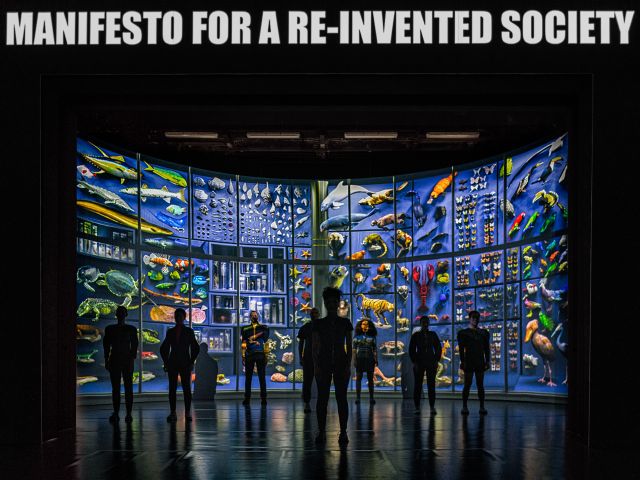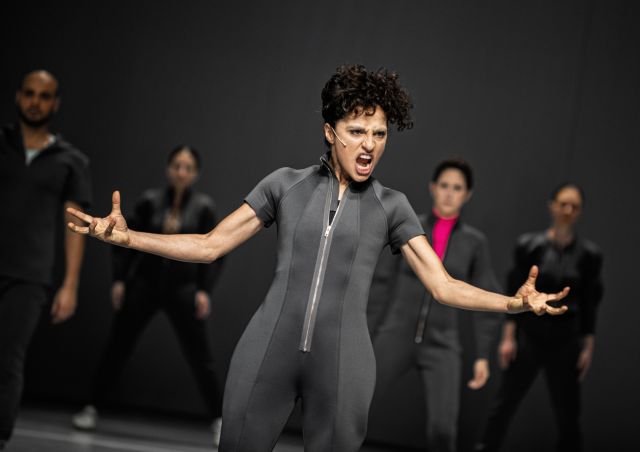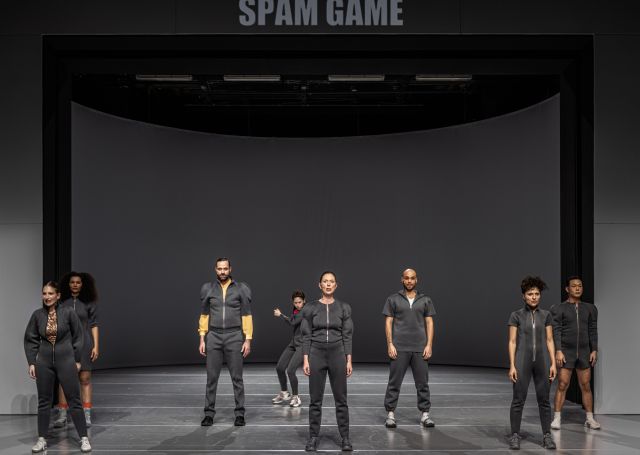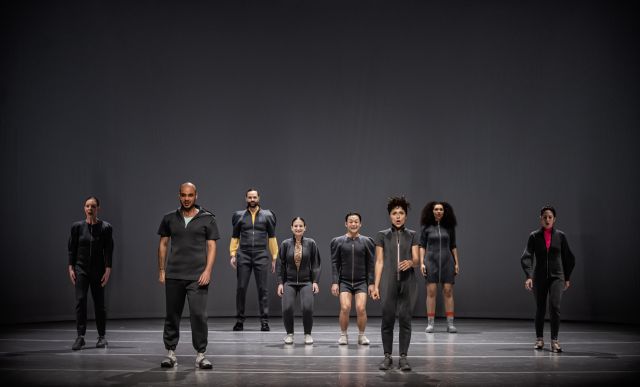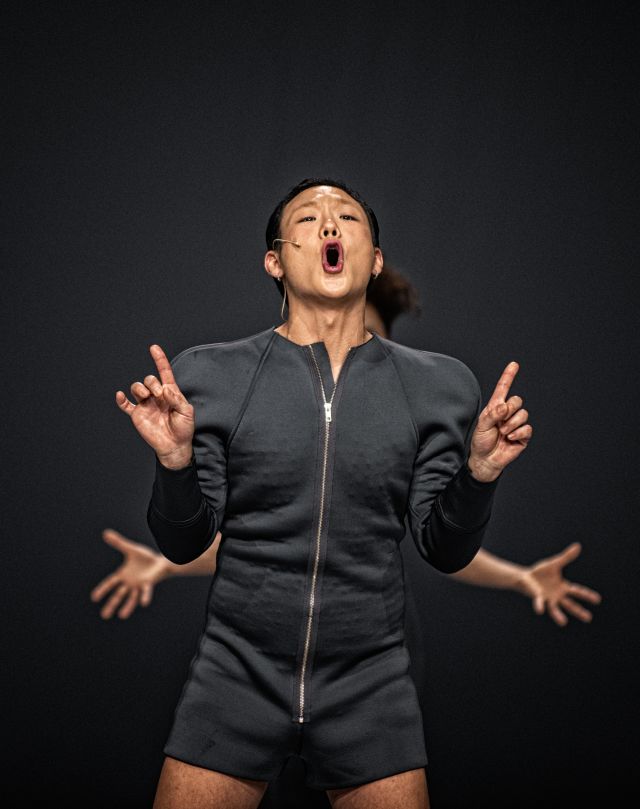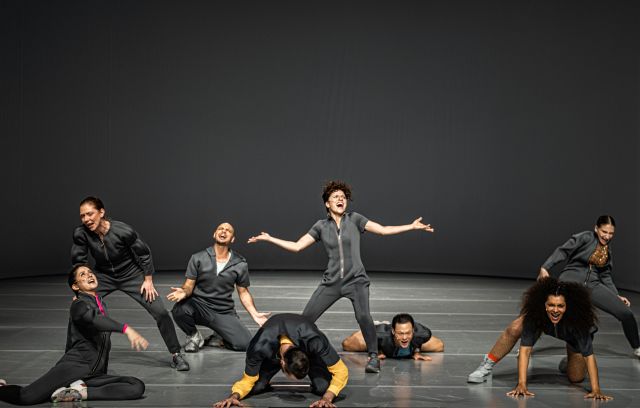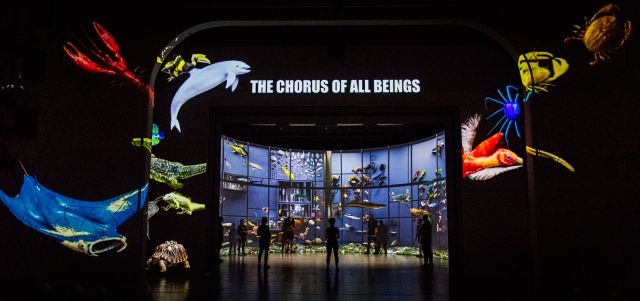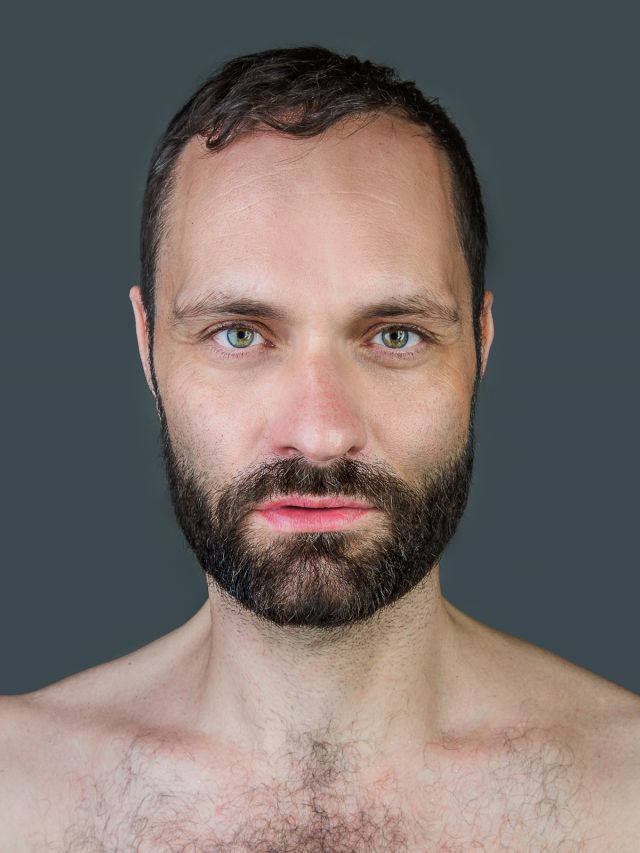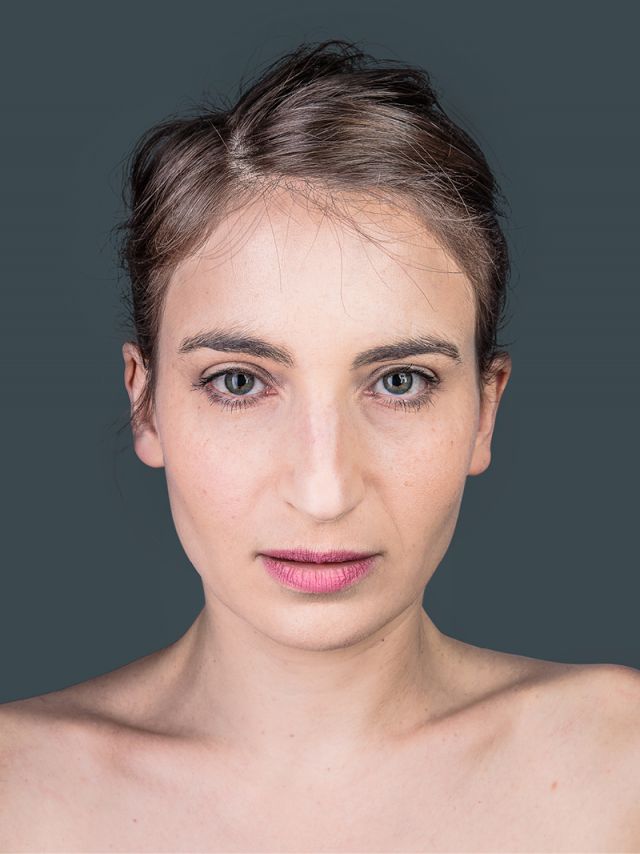Skip to main content
Still Life
A Chorus for Animals, People and all other Lives
Whose life counts as life? Whose life is still a life? Democratic societies are based on the segregation, digital control and exploitation of existences considered superfluous. Every day we are witnes ...
Whose life counts as life? Whose life is still a life? Democratic societies are based on the segregation, digital control and exploitation of existences considered superfluous. Every day we are witnessing the brutal denial of the status of living entities to successive groups of beings.
STILL LIFE is a choral manifesto of re-invented society, a call for a radical new world of relations. The chorus creates a border-crossing song to expose the invisible mechanisms of violence, exclusion and annihilation of life, which turn »never again« into »Auschwitz no end«. The chorus operates with techniques of exaggeration, alienation of language, it exists between lip-sync, language, music and silence. Clashing narrations, it creates a digital, post-language, song as a monstrous answer to our reality. In the end, eight actors, embodying a multiplied Dionysus, god of ecstasy and indestructible life, invite you to a vision of a chorus of all living beings: humans and non-humans, living and dead, voices of people murdered in Auschwitz, rhythms of Namibian tribes, animals and all others…
The starting point and metaphor for the performance is the magnificent panorama from the Museum für Naturkunde Berlin, the wall of biodiversity. Life and non-life in the same time.
THEATER IS A PLACE OF HOPE
Arno Widmann in conversation with Marta Górnicka (excerpts)
MG: The pandemic hit the chorus in the very heart. Now the chorus starts to breathe again but has also stopped speaking in the literal sense. It lip-syncs, creates a new form of chorus theatre. It works on the edge of recorded voice, live voice, music and silence. As if there is no return to what has been. However, in the final scene, SONG OF ALL BEINGS, we hear live voices singing an old Jewish song about a calf going to the slaughterhouse. With a new translation into German, which is more close to the original. But we can also recognize Joseph Schmidt’s voice, rhythms of Namibian tribes, kids… A chorus of people and animals, living and dead. Such a chorus never rests. Even the life that has been killed, the still life, speaks to us. It is a utopia. An artistic and a social one.
AW: German critics bristled at your Holocaust phrases.
MG: I feel I have put my fingers into the wounds of the German body. In the play there is a chorus of mothers who survived the Holocaust. They speak of the Holocaust. And the mechanisms that bring it forth again and again. These mothers also say: history repeats itself and nothing repeats itself as often as Auschwitz.
AW: It is not something unique?
MG: The fundamental mechanism of the annihilation of life is always the same. »Auschwitz kein Ende«, as Heiner Müller said. “Never again” can always turn into »Auschwitz no end«, but frankly speaking, nobody listens to the survivors. The main picture of the production shows the wall of biodiversity from the Museum of Natural History, Berlin. A magnificent panorama. The biggest still life in the world. You stand in front of it and know all these creatures belong together. But then you realize: It doesn't just show life. It also shows death. As beautiful as the picture is, it is also terrible. A Western theatre of death disguised as life. This is a metaphor, a big sarcophagus of many forms of life. Through this one can look on the history of extinct species, historical violence and genocides. The mechanism of annihilation of live is invisible but alive.
The interview in full length
World Premiere on 31/July 2021
Eine Produktion des Maxim Gorki Theaters. Still Life ist Teil des Projektes Chorus of Women Berlin, gefördert durch die Kulturstiftung des Bundes und aus Mitteln des Landes Berlin, Senatsverwaltung für Kultur und Europa. Mit freundlicher Unterstützung des Museum für Naturkunde Berlin.
Photo: Esra Rotthoff
Stage photos: Magda Hueckel
A project by
Marta Górnicka
Regie + Libretto
Marta Górnicka
Team
Composition
Polina Lapkovskaja
Choreography
Anna Godowska
Stage design
Robert Rumas
Costumes
Sophia May
Sound design
Rafał Ryterski
3D Video Animations
Luis August Krawen, Alexander Pannier
Dramaturgy
Agata Adamiecka-Sitek, Clara Probst
Puppet Design
Atelier Judith Mähler
Translation
Andreas Volk
Cast
Pressestimmen
»In precisely timed choreography [the eight performers] call us to change, because what this choir sees is capitalism, racism, colonialism and patriarchy. Everywhere: violence. While talking about all catastrophes, the choir is bubbling over with joy in playing.«
To see a chorus, especially one as highly dynamic as this one on stage – becomes a sign of hope.
»This choir from the ensemble of the Gorki Theater is highly virtuosic and absolut precise. The individual voices multiply into a powerful trio or quartet, sometimes with each other, sometimes against each other, the voices act like instruments in a symphonic concert. Occasionally they overturn when everyone is speaking at the same time: a well- calculated cacophony.«


